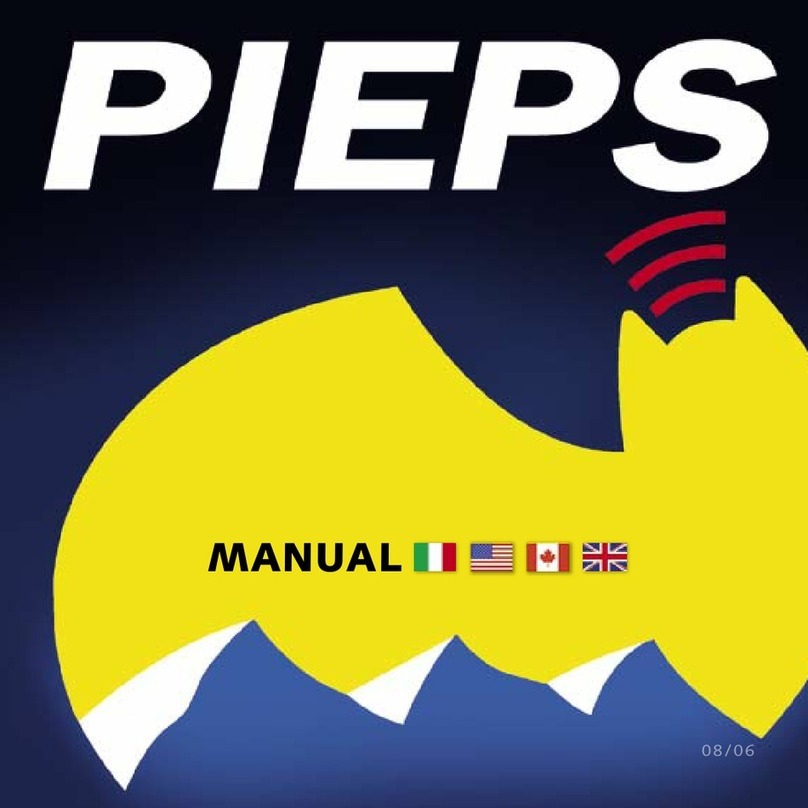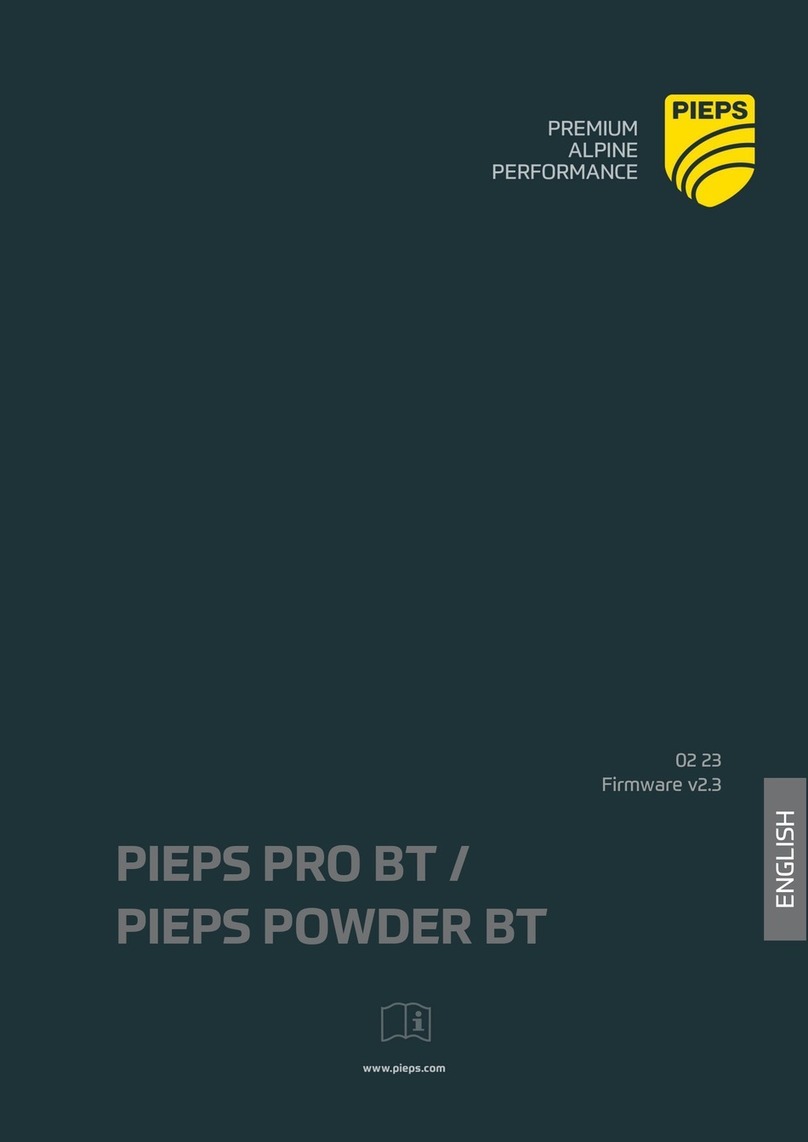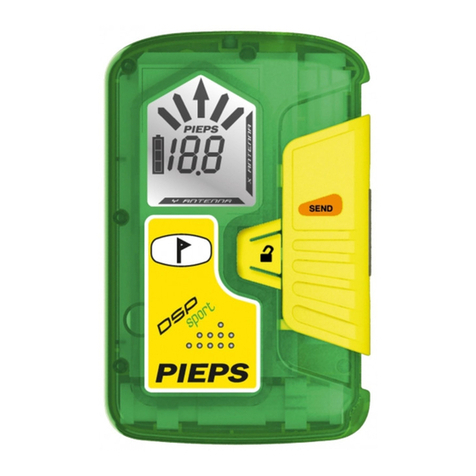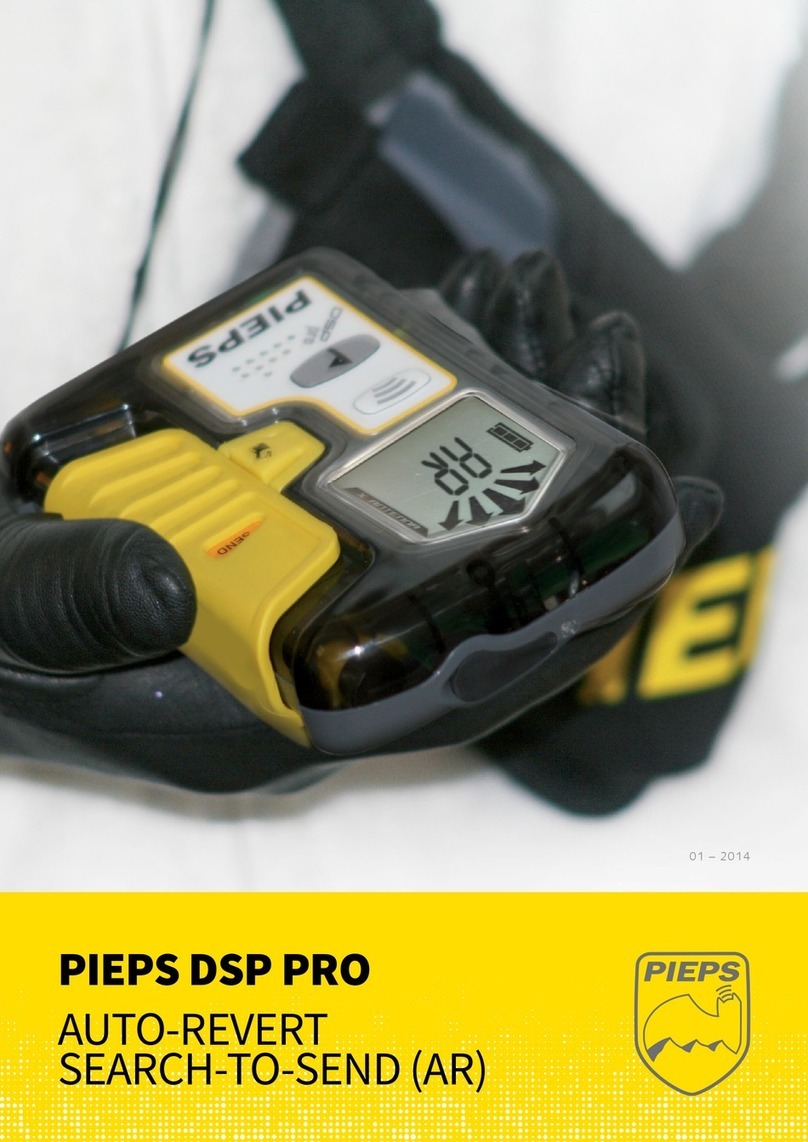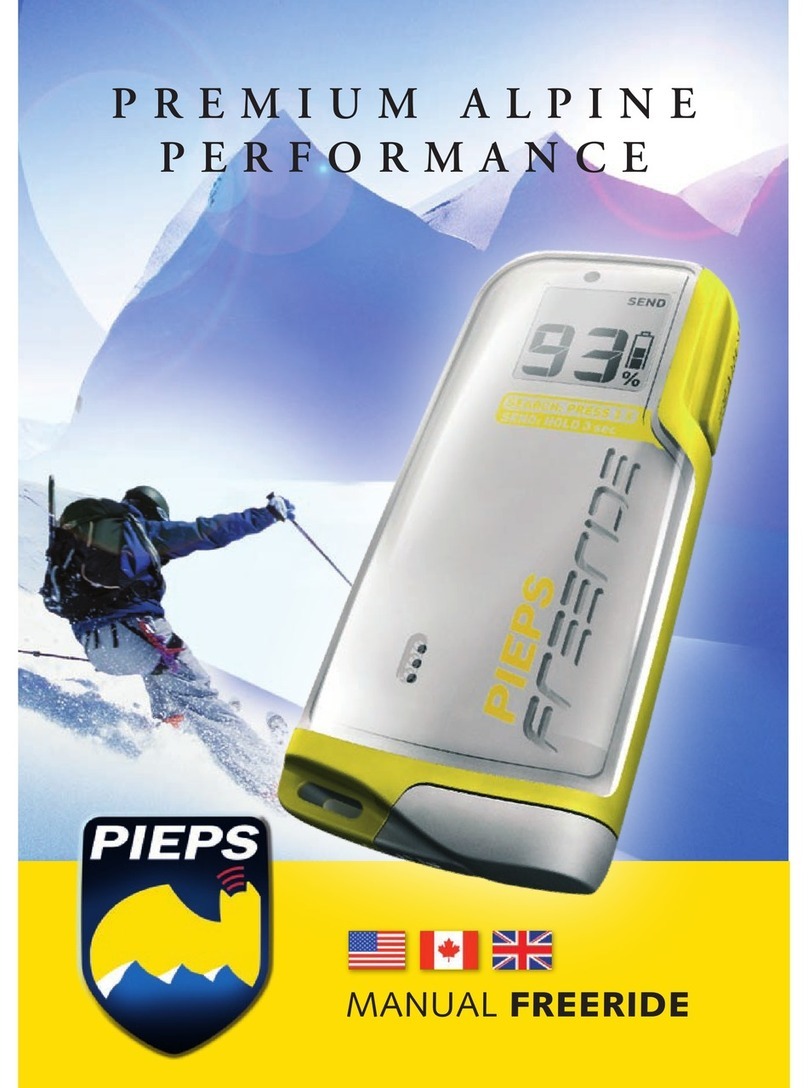
En cas d’urgence, RESTEZ CALME, OBSERVEZ,
DONNEZ L’ALERTE !
Observez le cours pris par les avalanches. Retenez
bien les points où la victime a été saisie par
l’avalanche (point de saisie) et où elle a été vue
pour la dernière fois (point de disparition). La
ligne droite entre les deux points donne le sens
d’écoulement de l’avalanche. L’aire de recherche
principale se situe à gauche et à droite de cette
ligne. Lorsque l’avalanche s’immobilise, le plus
expérimenté de l’équipe oriente la recherche. Il
guide le marquage des deux points (au moyen
de bâtons par exemple) d´un côté ou de l´autre
de l´avalanche. Appuyer alors sur le verrouillage
de l’interrupteur principal et mettre ce dernier en
mode SEARCH (RECHERCHE). Commencer alors
la RECHERCHE PRIMAIRE. Le détecteur reçoit
tous les signaux des victimes ensevelies dans le
périmètre de portée du détecteur. Scruter l’aire
de recherche primaire selon le plan schématique à
gauche jusqu’à ce que vous receviez un signal.
ATTENTION ! Tous les participants (et observa-
teurs) mettent leurs détecteurs en mode réception
(mode SEARCH - RECHERCHE). Veiller à ce
qu’aucun appareil électrique (par exemple
téléphones portables, appareils radios) ni de pièce
métallique ne se trouve dans l’aire de l’avalanche.
Le détecteur n’émet pas de signaux en mode
SEARCH (RECHERCHE). Pour passer à nouveau
au mode SEND (EMISSION) en cas d’une nouvelle
avalanche, il suft d’appuyer sur la partie saillante
de l’interrupteur principal.
In case of an emergency, the key thing to remember
is KEEP CALM, OBSERVE, RAISE THE ALARM!
Observe the course of the avalanche and make
an exact mental note of where the victim was
hit by the avalanche (point of impact) and was
last seen (point of disappearance). The extension
of these points indicates the ow direction of the
avalanche! The primary search area is to the left
and right of this. When the avalanche stops, the
most experienced member of the group takes
control of the search, issuing instructions from the
edge of the avalanche so that another person can
mark the above points (with sticks, etc.). Depress
the main switch lock and push the main switch
to the SEARCH position. You can now begin the
PRIMARY SEARCH, in which the device will pick up
any signals from victims within its range. Now scan
the primary search area according to the plan on
the left until a steady signal is reported.
IMPORTANT! All participants (including
observers) must switch their devices to receiving
(SEARCH) mode. Always make sure there are no
electronic devices (e.g. mobiles, radios,) or solid
metal items in the direct vicinity of the search. Due
to the fact, that the beacon is not transmitting a
signal in SEARCH-mode anymore, the PIEPS DSP is
equiped with a rapid switch-back mechanism (just
push on the protruding top of the main-switch) in
the case of a following avalanche.
EMERGENCY / SEARCH MODE
08/06
|
11
CAS D’URGENCE, MODE SEARCH (RECHERCHE)
1
3
2
50m
5
25m
25m
50m
4
25m
25m
1 Point de saisie
2 Point de disparition
3 Direction d’écoulement
4 Sauveur seul
5 Equipe de sauvetage
1 Point of impact
2 Point of disappearence
3 Flow direction
4 Singel rescue person
5 Multiple rescue persons






